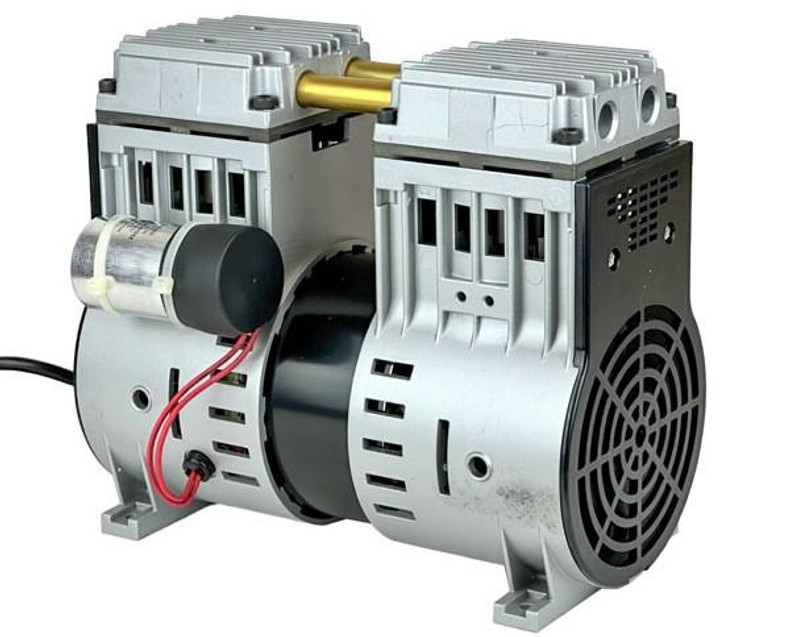Understanding Compressor Ratings: How to Spot Gimmicks and Make Informed Choices
In many industries—from vacuum cleaners to pond aeration—marketing tactics have evolved to make products seem more powerful or advanced than they really are. One common strategy involves highlighting certain ratings, like horsepower or amps, in ways that can be misleading or confusing for consumers.
Recognizing these tactics is key to making smart choices and avoiding being sold a gimmick.
A Brief History: From Horsepower to Modern Ratings
How Power Was Traditionally Measured
Years ago, vacuum cleaner and motor manufacturers rated their power using horsepower (HP)—a straightforward measure of mechanical strength. Over time, some companies started emphasizing the motor's electrical current draw in amps—a number that's easier to measure but doesn't tell the whole story about performance.
Why the Shift?
- Ease of measurement: Amps are simple to measure and compare.
- Common Term: Almost everone is familiar with the term "Amps" - even if their not sure what it is.
- Marketing appeal: Higher amps can suggest a more powerful motor, even if actual performance doesn’t improve.
- Consumer confusion: People often interpret higher amps or horsepower as "more effective," which isn’t always true.
The Same Pattern in Pond and Lake Aeration
Lately, some manufacturers are doing the same thing with pond compressors. They might now claim their compressors are “more powerful” by giving them higher horsepower ratings—say, switching from a 1/2 HP to a 3/4 HP compressor—even though the actual performance stays about the same.
This can be misleading, making it seem like you’re getting a better product when you’re not.
Why Is This a Problem?
- Misleads Customers: You might think you're buying a more powerful machine, but it really isn’t.
- Damages Trust: When customers realize the ratings are exaggerated, it hurts everyone’s confidence.
- Wastes Money: You could spend more on a product that doesn’t deliver better results.
Understanding Compressor Ratings: Amps at a Specific Voltage
Most compressor ratings are provided in terms of amps (A) — which measure how much electrical current the motor draws — but only at a specific operating voltage, such as the standard U.S. voltages of 120V or 240V.
What does this mean for you?
- Amps tell you how much electricity the compressor uses during operation at that voltage.
- You can estimate the power consumption by multiplying the amps by the voltage (120V or 240V).
How to use this info:
- Power in watts = Amps x Volts.
- For example, a compressor drawing 10 amps at 120V uses approximately 1,200 watts (10 x 120).
- If it draws 5 amps at 240V, then it also uses about 1,200 watts (5 x 240).
Compare this to the horsepower equivalent:
- Since 1 HP ≈ 746 watts, a compressor consuming 1,200 watts of power equates to roughly 1.6 HP.
Why is this important?
- It helps you verify if the claimed horsepower makes sense.
- For example, if a compressor claims to be 3/4 HP but only draws 4 amps at 120V (which is 480 watts), it’s unlikely to have ¾ HP of mechanical power.
- This discrepancy can be a red flag indicating the rating might be exaggerated.
The Power of Simple Math: Checking the Ratings
One easy way to verify the manufacturer's claims:
-
Check the amps listed on the compressor’s label.
-
Multiply the amps by the voltage (120V or 240V).
-
Compare the resulting watts to the claimed horsepower:
- For 120V, convert amps to watts by multiplying by 120.
- For 240V, multiply amps by 240.
-
Compare the watts to the horsepower:
- 1 HP ≈ 746 watts.
-
Example:
- If a compressor draws 4 amps at 120V, that’s 4 x 120 = 480 watts.
- Since 746 watts = 1 HP, this compressor’s electrical power usage is roughly 0.64 HP.
- So, claiming it’s 3/4 HP (which is 559.5 watts) would be a slight exaggeration, but if it’s only using 480 watts, the rating is likely inflated.
This quick calculation helps you see if the rating is realistic and avoid being misled by inflated claims.
Final Tips to Spot Gimmicks
- Focus on actual performance data: Look for airflow (CFM), pressure (psi), and efficiency.
- Ask for detailed specs: Don’t settle for just horsepower or amp ratings.
- Use simple math: Multiply amps by 120V or 240V to get watts; compare with the claimed horsepower.
- Read reviews: See what real users say about how well the product performs.
- Be skeptical of high horsepower claims: Especially if they seem disproportionate to the power consumption.
Final Thoughts
Marketing tactics that inflate ratings like horsepower or amps can be tempting but often don’t tell the full story. By understanding the relationship between amps, volts, and horsepower—and doing simple calculations—you can protect yourself from being sold a product that doesn’t meet your needs.
Remember: The best choice is based on proven performance, not just inflated numbers. Stay informed, ask questions, and select equipment that delivers real results!



